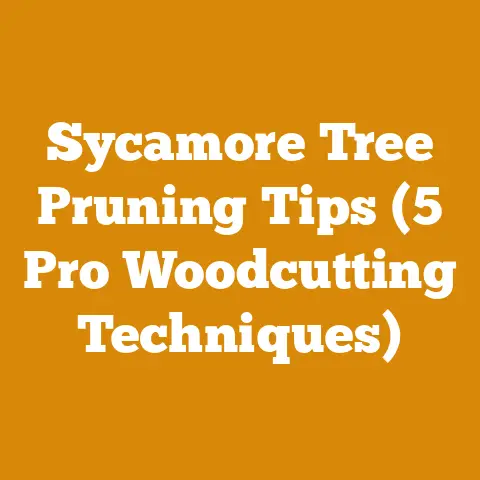Dutch Elm Disease Leaves: Identification & Treatment Tips (Expert Guide)
Dutch Elm Disease: Identification & Treatment Tips (Expert Guide)
Understanding Dutch Elm Disease
Dutch Elm Disease (DED) is a fungal disease that affects elm trees (Ulmus species). It’s caused by fungi in the Ophiostoma genus, primarily Ophiostoma ulmi and Ophiostoma novo-ulmi. These fungi are incredibly aggressive and can rapidly spread throughout a tree’s vascular system, disrupting water and nutrient transport. This disruption leads to wilting, yellowing, and eventually, death of the affected branches and the entire tree. DED is a significant threat to elm populations worldwide, and early detection and proper management are crucial.
The Devastating History of Dutch Elm Disease
The history of Dutch Elm Disease is a sad one. It was first identified in Europe around 1910 and quickly spread, decimating elm populations across the continent. The disease was introduced to North America in the 1930s, likely through imported elm logs. The impact was devastating. Iconic elm-lined streets and parks were transformed as these beautiful trees succumbed to the disease. The economic and aesthetic losses were immense, and the disease continues to be a concern today.
Identifying Dutch Elm Disease: Key Symptoms
Early detection is paramount when dealing with Dutch Elm Disease. The sooner you identify the symptoms, the better chance you have of implementing effective management strategies. Here are some key symptoms to watch for:
- Wilting Leaves: This is often one of the first noticeable signs. Leaves on affected branches will begin to wilt, often appearing limp and drooping. The wilting may initially be confined to a single branch or section of the tree.
- Yellowing Leaves (Chlorosis): As the disease progresses, the leaves will start to turn yellow, a condition known as chlorosis. This yellowing is due to the disruption of chlorophyll production caused by the fungal infection.
- “Flagging”: This term refers to the sudden wilting and death of a branch or section of the tree, often with the leaves still attached. The affected foliage may turn brown and remain on the tree for some time.
- Vascular Staining: This is a definitive symptom of Dutch Elm Disease. If you cut into an affected branch, you’ll notice brown streaking or discoloration in the sapwood (the outer layers of wood). This staining is caused by the fungus blocking the tree’s vascular system. Look for these streaks running lengthwise along the branch.
- “Shepherd’s Crook”: In some cases, the tips of affected branches will bend over in a distinctive “shepherd’s crook” shape. This is due to the rapid death of the branch tip.
It’s important to note that these symptoms can sometimes be confused with other tree diseases or environmental stressors. If you suspect Dutch Elm Disease, it’s crucial to confirm your diagnosis with a qualified arborist or plant pathologist.
Confirming the Diagnosis: Laboratory Testing
While visual symptoms can be suggestive of Dutch Elm Disease, a definitive diagnosis requires laboratory testing. Here’s how it works:
- Sample Collection: A sample of an affected branch is collected, typically one showing vascular staining. The sample should be at least 6-8 inches long and about 1-2 inches in diameter.
- Lab Analysis: The sample is sent to a plant disease diagnostic laboratory. The lab will attempt to isolate and identify the Ophiostoma fungus from the wood tissue. This is usually done through culturing the fungus on a growth medium.
- Results: The lab will provide a report confirming or denying the presence of the Dutch Elm Disease fungus. This report is essential for making informed decisions about treatment and management.
I always recommend getting a lab confirmation before investing in any treatment. It’s the only way to be sure you’re dealing with Dutch Elm Disease and not something else.
How Dutch Elm Disease Spreads: Understanding the Vectors
Dutch Elm Disease spreads in two primary ways: through elm bark beetles and through root grafts. Understanding these transmission mechanisms is crucial for implementing effective control measures.
Elm Bark Beetles: The Primary Culprits
Elm bark beetles are small insects that play a significant role in spreading Dutch Elm Disease. There are two main species involved: the European elm bark beetle (Scolytus multistriatus) and the native elm bark beetle (Hylurgopinus rufipes). These beetles breed in dead or dying elm trees, including those infected with Dutch Elm Disease.
Here’s how they spread the disease:
- Contamination: As the beetles emerge from infected trees, they become contaminated with the spores of the Ophiostoma fungus.
- Feeding: The beetles then fly to healthy elm trees to feed on the bark, creating small wounds in the process.
- Infection: During feeding, the beetles introduce the fungal spores into the healthy trees, initiating a new infection.
The European elm bark beetle is considered the more aggressive vector, as it breeds more readily in smaller branches and can fly longer distances.
Root Grafts: Underground Transmission
Elm trees often form root grafts, which are natural connections between the roots of adjacent trees. These grafts allow the trees to share water and nutrients, but they also provide a pathway for the Dutch Elm Disease fungus to spread from an infected tree to a healthy one.
Root graft transmission is particularly common in urban areas where elm trees are planted close together. The fungus can move rapidly through the root system, infecting multiple trees in a short period.
Prevention is Key: Protecting Your Elm Trees
Preventing Dutch Elm Disease is always better than trying to cure it. Here are some essential preventative measures you can take to protect your elm trees:
- Sanitation: This is the most crucial step in preventing Dutch Elm Disease. It involves removing and destroying all dead, dying, or diseased elm wood. This eliminates breeding sites for elm bark beetles and reduces the overall inoculum (the amount of fungus) in the environment. Be sure to properly dispose of the wood by burning, chipping, or burying it.
- Insecticide Application: Insecticides can be used to control elm bark beetles. However, they should be applied carefully and strategically to minimize environmental impact. Systemic insecticides, which are absorbed by the tree and kill beetles as they feed, are often preferred.
- Fungicide Injection: Fungicides can be injected into healthy elm trees to provide protection against Dutch Elm Disease. These fungicides work by inhibiting the growth of the Ophiostoma fungus. However, fungicide injections are expensive and must be repeated every 1-3 years to maintain protection.
- Planting Resistant Varieties: Planting elm varieties that are resistant to Dutch Elm Disease is a long-term solution. Several resistant cultivars have been developed, including ‘American Liberty’, ‘Princeton’, and ‘Valley Forge’. These varieties are not completely immune to the disease, but they are much less susceptible than traditional American elms.
- Root Graft Disruption: If Dutch Elm Disease is present in your area, consider disrupting root grafts between elm trees. This can be done by trenching between trees or by using a specialized root-cutting machine. This prevents the fungus from spreading through the root system.
- Maintain Tree Health: Healthy trees are better able to resist disease. Ensure your elm trees are properly watered, fertilized, and pruned. Avoid damaging the bark, as this can create entry points for the fungus.
I’ve seen firsthand how effective sanitation can be in preventing Dutch Elm Disease. In one town I worked with, a proactive sanitation program reduced the incidence of the disease by over 70% in just a few years.
Treatment Options: What Can Be Done?
Unfortunately, there is no cure for Dutch Elm Disease. However, there are some treatment options that can help to manage the disease and prolong the life of infected trees.
- Fungicide Injection: As mentioned earlier, fungicide injections can be used to protect healthy trees. They can also be used to treat trees that are in the early stages of infection. However, fungicide injections are most effective when applied before the disease has spread extensively throughout the tree.
- Pruning: Pruning out infected branches can help to slow the spread of the disease. However, this is only effective if the infection is limited to a small portion of the tree. Be sure to prune well below the visible symptoms, cutting back to healthy wood. Sterilize your pruning tools between cuts to prevent spreading the fungus.
- Root Graft Disruption: As with prevention, root graft disruption can help to prevent the spread of the disease from infected trees to healthy ones.
- Tree Removal: In many cases, the best option is to remove and destroy severely infected trees. This prevents the trees from serving as a source of inoculum for further spread of the disease.
It’s important to consult with a qualified arborist to determine the best treatment options for your specific situation. They can assess the severity of the infection and recommend the most appropriate course of action.
Fungicide Injections: A Closer Look
Fungicide injections are a common treatment option for Dutch Elm Disease. Here’s a more detailed look at how they work and what to expect:
- Types of Fungicides: The most commonly used fungicides for Dutch Elm Disease are propiconazole and thiabendazole hypophosphite (TBZ). These fungicides are systemic, meaning they are absorbed by the tree and transported throughout its vascular system.
- Application Method: The fungicide is injected directly into the tree’s trunk, typically using a specialized injection system. The injections are usually made near the base of the tree, spaced evenly around the circumference.
- Timing: Fungicide injections are most effective when applied in the spring, before the leaves emerge. This allows the fungicide to be distributed throughout the tree before it becomes infected.
- Frequency: Fungicide injections must be repeated every 1-3 years to maintain protection. The frequency depends on the severity of the disease in the area and the specific fungicide used.
- Effectiveness: Fungicide injections can be effective in protecting healthy trees from Dutch Elm Disease. They can also help to slow the progression of the disease in trees that are in the early stages of infection. However, they are not a cure, and they will not save trees that are severely infected.
- Cost: Fungicide injections can be expensive, especially for large trees. The cost depends on the size of the tree, the type of fungicide used, and the number of injections required.
Before investing in fungicide injections, it’s important to weigh the costs and benefits carefully. Consider the value of the tree, the severity of the disease in your area, and the long-term commitment required.
Resistant Elm Varieties: A Long-Term Solution
Planting resistant elm varieties is a promising long-term solution for managing Dutch Elm Disease. Several resistant cultivars have been developed through breeding programs. These varieties are not completely immune to the disease, but they are much less susceptible than traditional American elms.
Here are some popular resistant elm varieties:
- ‘American Liberty’: This is a hybrid elm developed by the Elm Research Institute. It is highly resistant to Dutch Elm Disease and has a similar appearance to the traditional American elm.
- ‘Princeton’: This is another popular resistant variety that was developed at Princeton Nurseries. It has a vase-shaped form and good resistance to Dutch Elm Disease.
- ‘Valley Forge’: This variety was developed by the U.S. National Arboretum. It is known for its excellent resistance to Dutch Elm Disease and its rapid growth rate.
- ‘Accolade’: This is a hybrid elm with good resistance to Dutch Elm Disease and a broadly vase-shaped form.
When planting resistant elm varieties, it’s important to choose a cultivar that is well-suited to your local climate and soil conditions. Also, remember that even resistant varieties can still be infected with Dutch Elm Disease, especially if they are exposed to high levels of inoculum. Therefore, it’s still important to practice good sanitation and maintain tree health.
The Role of Sanitation in Dutch Elm Disease Management
I can’t stress enough how important sanitation is in managing Dutch Elm Disease. Sanitation involves removing and destroying all dead, dying, or diseased elm wood. This eliminates breeding sites for elm bark beetles and reduces the overall amount of fungus in the environment.
Here are some key sanitation practices:
- Prompt Removal: Remove infected trees as soon as possible. Don’t wait until the disease has spread throughout the tree or to other trees in the area.
- Proper Disposal: Dispose of the infected wood properly. Burning, chipping, or burying the wood are all effective methods. Do not leave the wood lying around, as this will allow elm bark beetles to continue breeding in it.
- Targeted Pruning: Prune out dead or dying branches from elm trees, even if they are not infected with Dutch Elm Disease. This helps to improve the overall health of the tree and reduces the risk of beetle infestation.
- Community-Wide Effort: Sanitation is most effective when it is implemented on a community-wide basis. Encourage your neighbors and local authorities to participate in sanitation efforts.
Sanitation is not a glamorous task, but it is essential for protecting elm trees from Dutch Elm Disease. It’s a proactive approach that can make a real difference in the long-term health of elm populations.
Dealing with Root Grafts: Prevention and Disruption
Root grafts can be a significant pathway for the spread of Dutch Elm Disease, especially in urban areas where elm trees are planted close together. Preventing or disrupting root grafts can help to slow the spread of the disease.
Here are some methods for dealing with root grafts:
- Trenching: Trenching involves digging a trench between elm trees to sever the root connections. The trench should be at least 2-3 feet deep to be effective.
- Root-Cutting Machines: Specialized root-cutting machines can be used to sever root grafts without digging a trench. These machines use a vibrating blade to cut through the roots.
- Chemical Root Pruning: Chemicals can be injected into the soil to kill the roots in a specific area. This can be used to disrupt root grafts between elm trees.
- Preventative Planting: When planting new elm trees, space them far enough apart to minimize the risk of root graft formation.
Disrupting root grafts can be a labor-intensive process, but it can be an effective way to prevent the spread of Dutch Elm Disease in areas where root graft transmission is common.
The Impact of Dutch Elm Disease on Elm Populations
Dutch Elm Disease has had a devastating impact on elm populations worldwide. In many areas, it has wiped out entire populations of these majestic trees. The loss of elms has had significant ecological, economic, and aesthetic consequences.
- Ecological Impact: Elms provide important habitat for a variety of wildlife species. The loss of elms has reduced the availability of food and shelter for these animals.
- Economic Impact: The cost of removing and replacing dead elm trees can be substantial. Dutch Elm Disease has also caused economic losses in the timber industry.
- Aesthetic Impact: Elms are beautiful trees that provide shade and enhance the aesthetic appeal of urban and rural landscapes. The loss of elms has diminished the beauty of many communities.
Dutch Elm Disease is a reminder of the importance of protecting our trees from invasive pests and diseases. It highlights the need for proactive management strategies and a commitment to preserving our natural resources.
What to Do If You Suspect Dutch Elm Disease
If you suspect that one of your elm trees may have Dutch Elm Disease, here are the steps you should take:
- Observe the Symptoms: Carefully examine the tree for the key symptoms of Dutch Elm Disease, such as wilting leaves, yellowing leaves, “flagging,” and vascular staining.
- Contact a Professional: Contact a qualified arborist or plant pathologist to confirm the diagnosis. They can collect a sample of the affected branch and send it to a laboratory for testing.
- Follow Recommendations: Follow the recommendations of the arborist or plant pathologist. This may include fungicide injections, pruning, root graft disruption, or tree removal.
- Practice Sanitation: Practice good sanitation by removing and destroying all dead, dying, or diseased elm wood.
- Monitor Other Trees: Monitor other elm trees in the area for signs of Dutch Elm Disease. Take preventative measures to protect them from infection.
Early detection and prompt action are crucial for managing Dutch Elm Disease. Don’t hesitate to seek professional help if you suspect that your elm tree may be infected.
Future Research and Management Strategies
Research on Dutch Elm Disease is ongoing, and new management strategies are constantly being developed. Some areas of current research include:
- Developing More Resistant Varieties: Researchers are working to develop elm varieties that are even more resistant to Dutch Elm Disease. This involves identifying genes that confer resistance and incorporating them into new cultivars.
- Improving Fungicide Treatments: Researchers are exploring new fungicides and application methods that are more effective and less harmful to the environment.
- Biological Control: Researchers are investigating the use of biological control agents, such as fungi and bacteria, to control elm bark beetles and the Dutch Elm Disease fungus.
- Understanding the Disease Mechanism: Researchers are working to better understand the mechanisms by which the Dutch Elm Disease fungus infects and kills elm trees. This knowledge could lead to new strategies for preventing and treating the disease.
The future of elm trees depends on continued research and the development of effective management strategies. By working together, we can protect these magnificent trees from the devastating effects of Dutch Elm Disease.
The Importance of Community Involvement
Dutch Elm Disease management is not just the responsibility of individual property owners or professional arborists. It requires a community-wide effort. Here are some ways that communities can get involved:
- Public Education: Educate the public about Dutch Elm Disease and the importance of preventative measures. This can be done through workshops, seminars, brochures, and websites.
- Sanitation Programs: Implement community-wide sanitation programs to remove and destroy dead, dying, or diseased elm wood.
- Tree Planting Programs: Encourage the planting of resistant elm varieties in parks, streets, and other public spaces.
- Funding for Research: Support research on Dutch Elm Disease and the development of new management strategies.
- Collaboration: Encourage collaboration between property owners, arborists, government agencies, and research institutions.
By working together, communities can effectively manage Dutch Elm Disease and protect their elm trees for future generations.
My Personal Experiences with Dutch Elm Disease
Over the years, I’ve witnessed the devastating effects of Dutch Elm Disease firsthand. I’ve seen majestic elm trees, once the pride of their communities, succumb to the disease and be reduced to lifeless skeletons. I’ve also seen the hard work and dedication of arborists and community members who are fighting to save these trees.
This experience taught me the importance of perseverance and community involvement in Dutch Elm Disease management. It also reinforced my belief that we can make a difference in protecting our trees from this devastating disease.
Common Mistakes to Avoid
When dealing with Dutch Elm Disease, it’s important to avoid these common mistakes:
- Ignoring the Symptoms: Don’t ignore the symptoms of Dutch Elm Disease. Early detection is crucial for effective management.
- Delaying Treatment: Don’t delay treatment if you suspect that your elm tree may be infected. The sooner you take action, the better the chances of saving the tree.
- Improper Pruning: Don’t prune infected branches without sterilizing your tools. This can spread the fungus to other parts of the tree.
- Neglecting Sanitation: Don’t neglect sanitation. Removing and destroying dead, dying, or diseased elm wood is essential for preventing the spread of the disease.
- Relying on a Single Treatment: Don’t rely on a single treatment method. A combination of preventative and management strategies is usually the most effective approach.
- Ignoring Professional Advice: Don’t ignore the advice of a qualified arborist or plant pathologist. They can provide expert guidance on managing Dutch Elm Disease.
By avoiding these mistakes, you can increase your chances of protecting your elm trees from Dutch Elm Disease.
Conclusion: A Call to Action
Dutch Elm Disease is a serious threat to elm populations worldwide. However, with proper knowledge and management strategies, we can protect these magnificent trees from the devastating effects of the disease.
I encourage you to take action to protect the elm trees in your community. Learn to identify the symptoms of Dutch Elm Disease, practice good sanitation, and support research on new management strategies. Together, we can ensure that elm trees continue to grace our landscapes for generations to come.
Remember, prevention is key. Stay vigilant, stay informed, and let’s work together to preserve these beautiful trees.






